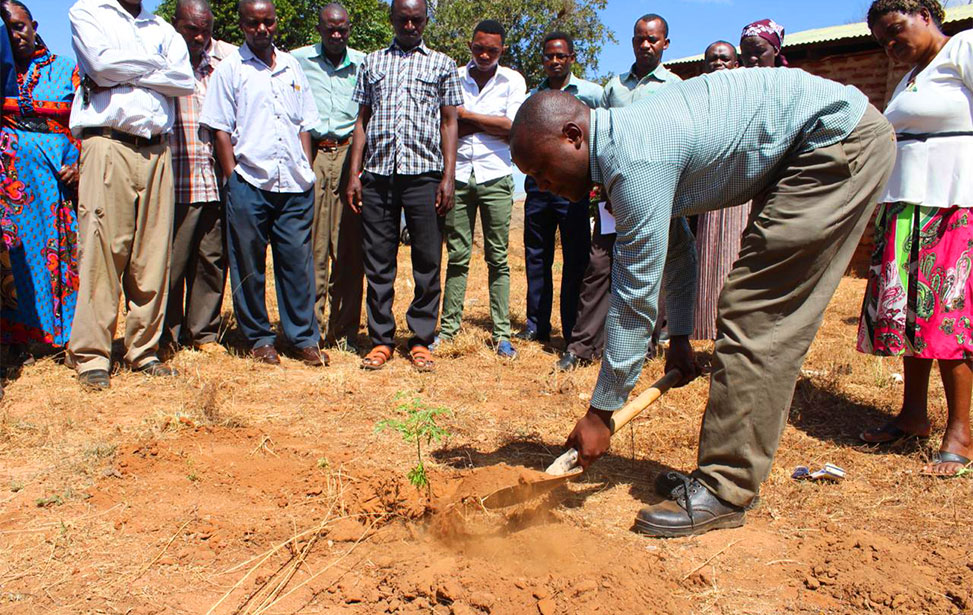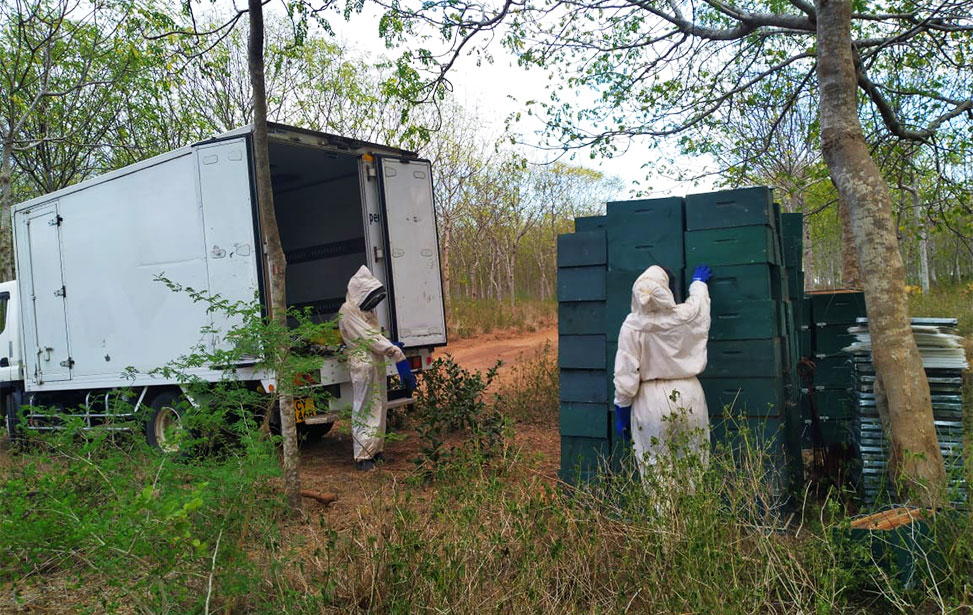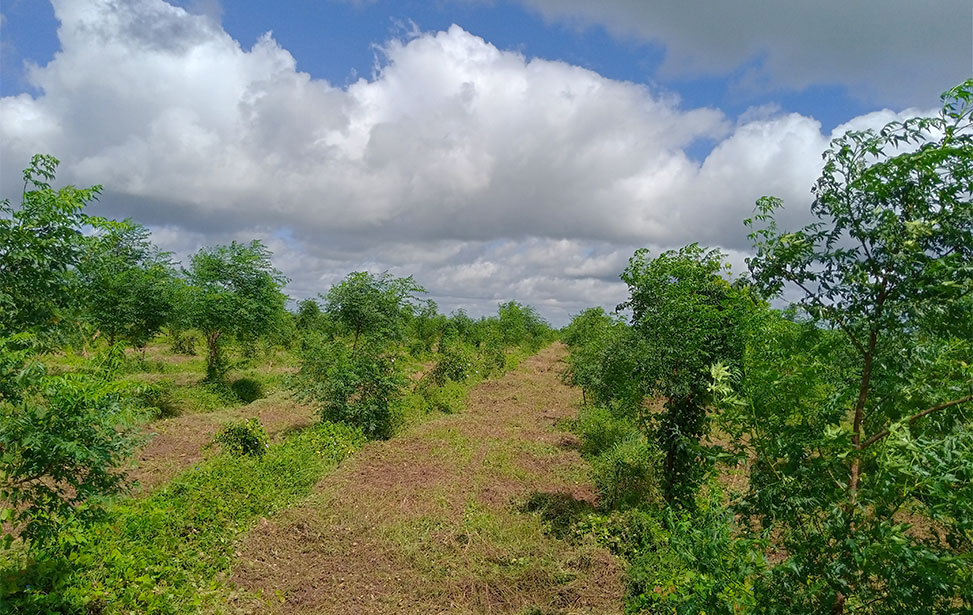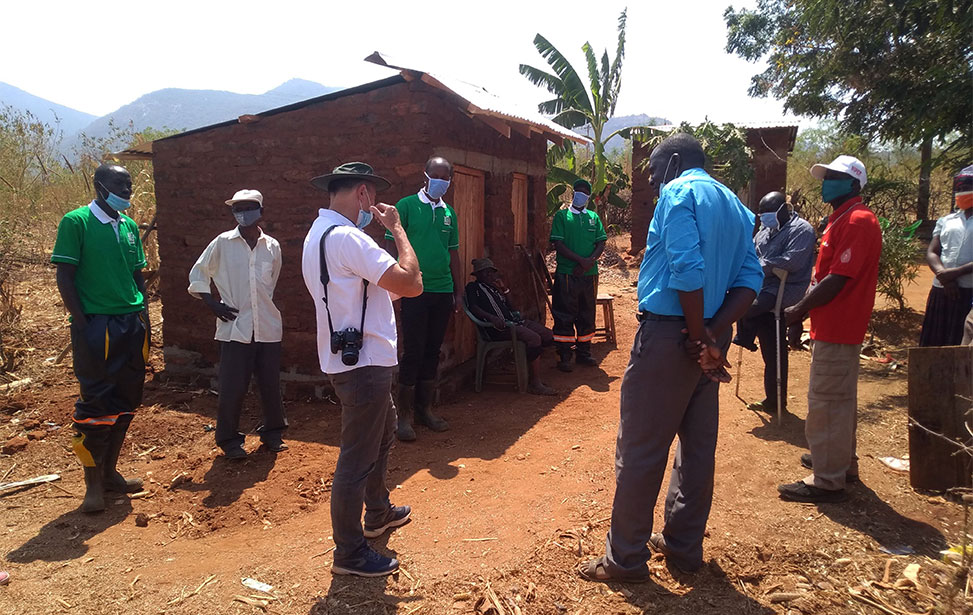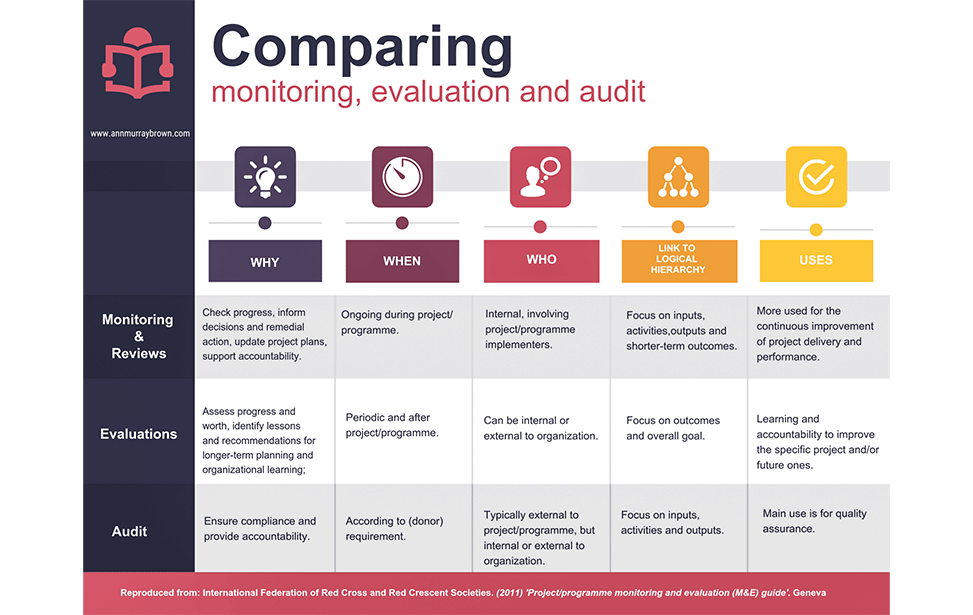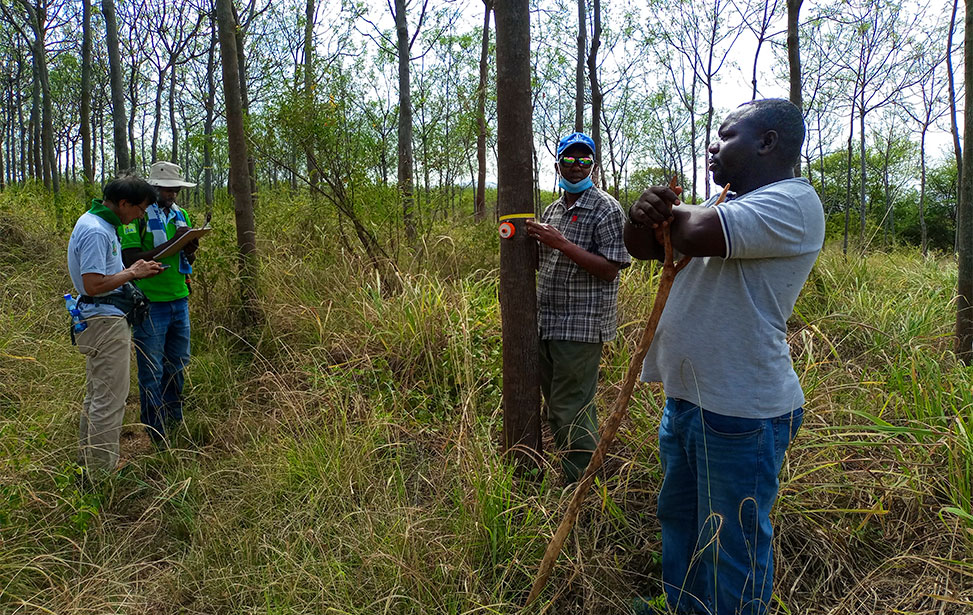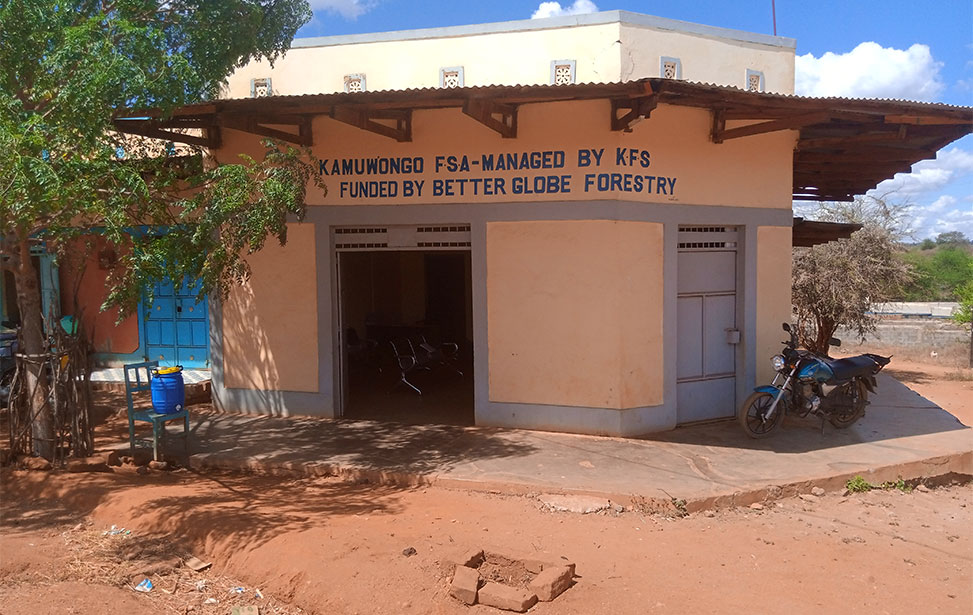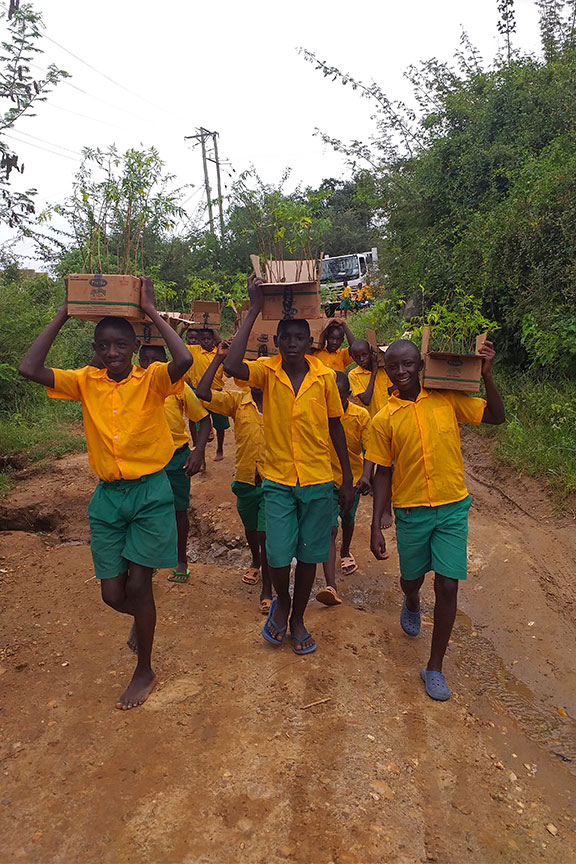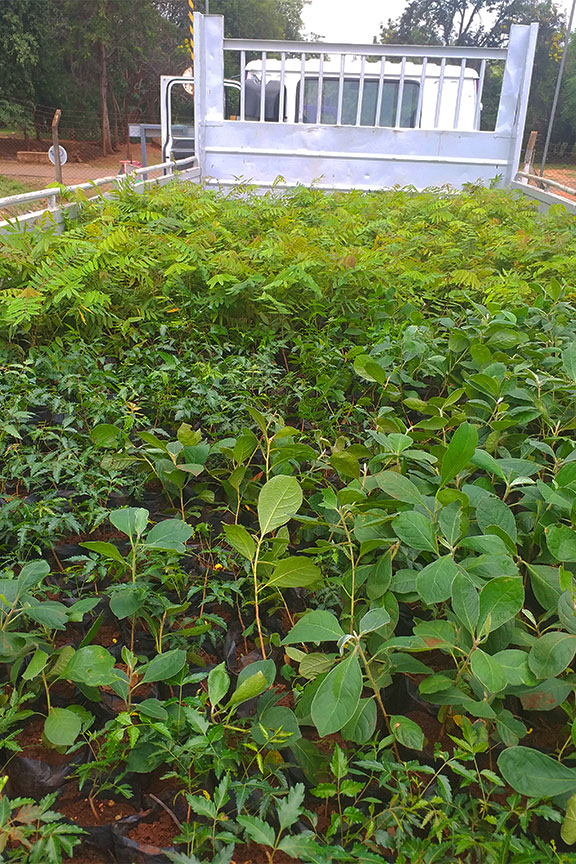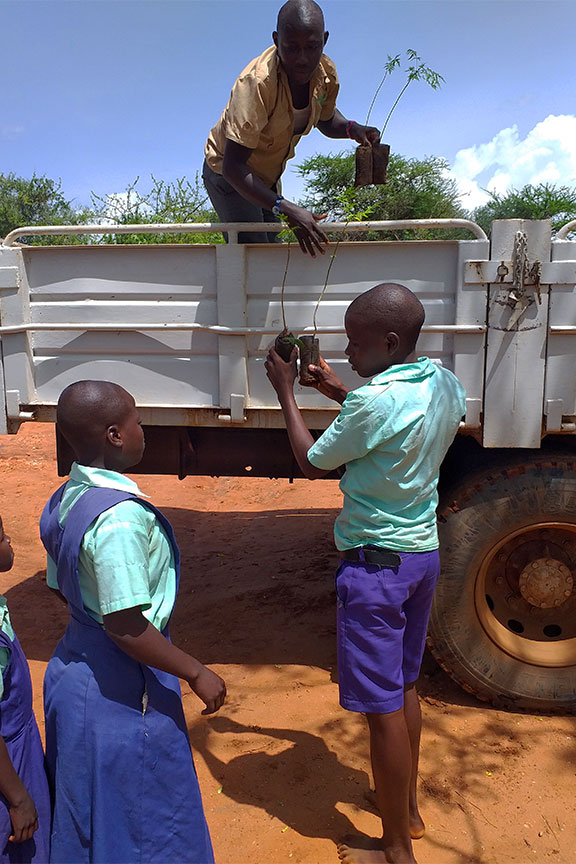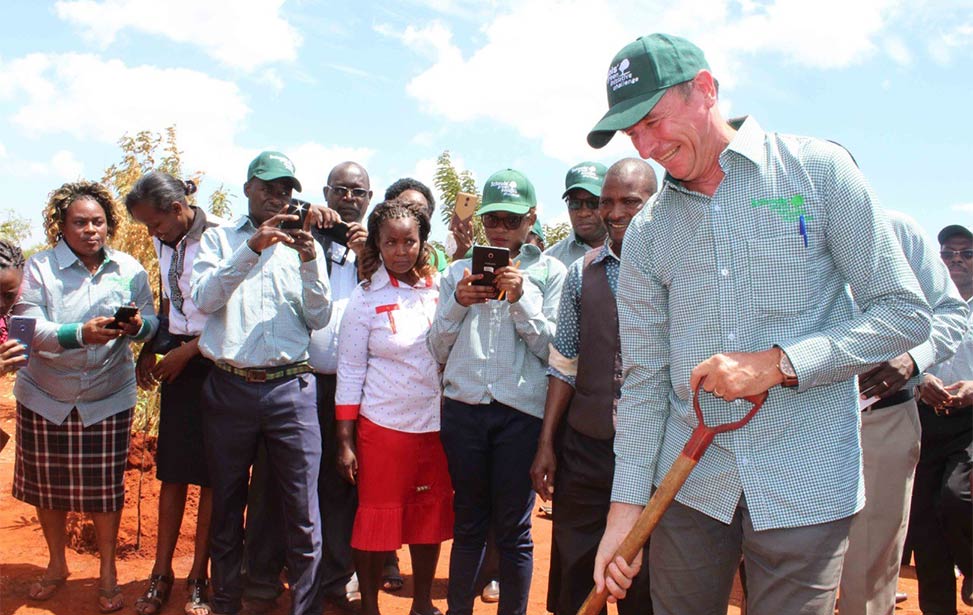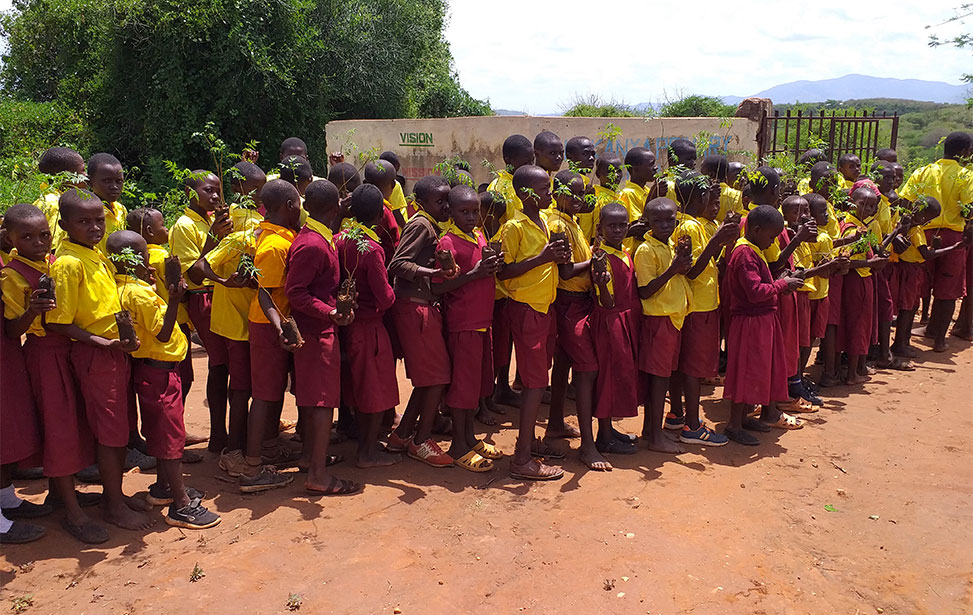
Planning for seedling distribution with schools
- John Njenga, Gideon Kibusia, and Samuel Nakhone
Seedling distribution is a critical activity of the Green Initiative Challenge (GIC). It is conducted twice a year for 100 schools per phase in Embu, Kitui and Machakos counties. This is done prior to the onset of rains and depending on the school calendar. The initial issuance is done between February to end of March, while issuance for gapping is done between September to October. During the initial issuance, each school is supplied with a total of 300 seedlings, i.e.150 Melia volkensii (mukau) seedlings and 150 seedlings of either Senna siamea/Azadirachta indica (neem) or Terminalia brownii, or an assortment of two.
The gapping exercise is done depending on the number of surviving seedlings per school and the effort put by the school to take care of the initially issued seedlings.
Seedling distribution
This entails planning for the logistics, which is facilitated by KenGen Foundation (GIC is a partnership between the KenGen Foundation, Better Globe Forestry, and others), the loading and collection of seedlings by Monitoring and Evaluation (M&E) officers, assisted by workers at the Gitaru tree nursery and the Better Globe Forestry tree nursery at Katithini.
To reduce losses incurred during transportation, the lorry is loaded with a layer of wet sand (about 4 inches) to minimize overheating of the seedlings’ roots. The sand also holds the seedlings in position thus minimizing shock. The lorries are covered with canvas to protect the seedlings from draught, hence enhancing quality.
The seedlings are then transported by a lorry to each school compound, except in the case where the road is impassable. In such a case, arrangements are made for the school community to pick them from the nearest accessible point. Green teachers or head teachers are the recipients of the seedlings, upon which they sign a seedling issuance form on behalf of the school community.
On average two lorries are used for efficiency and timeliness. Based on the consistency of drivers and lorries, this exercise takes 15 working days despite the expansiveness of the area covered by the project.
Planting
The school community, particularly pupils, teachers, board of management, and parents are involved in planting of the seedlings as per the species specifications. Prior to the distribution, green teachers and head teachers are taken through a training on land preparation, handling, planting, and tending of the tree seedlings within the GIC program.
During the planting exercise, the green teacher or head teacher conducts a planting demonstration on how to correctly implement the activity in presence of the school community. This is done according to the guidelines given by M&E officers during a training session (workshop). In some incidences, the school administration involves a M&E officer during the planting.
Importance of planning for distribution
The core drive for seedling distribution planning is to distribute according to the target numbers, and ultimately have all the seedlings received by the schools planted and survive.
